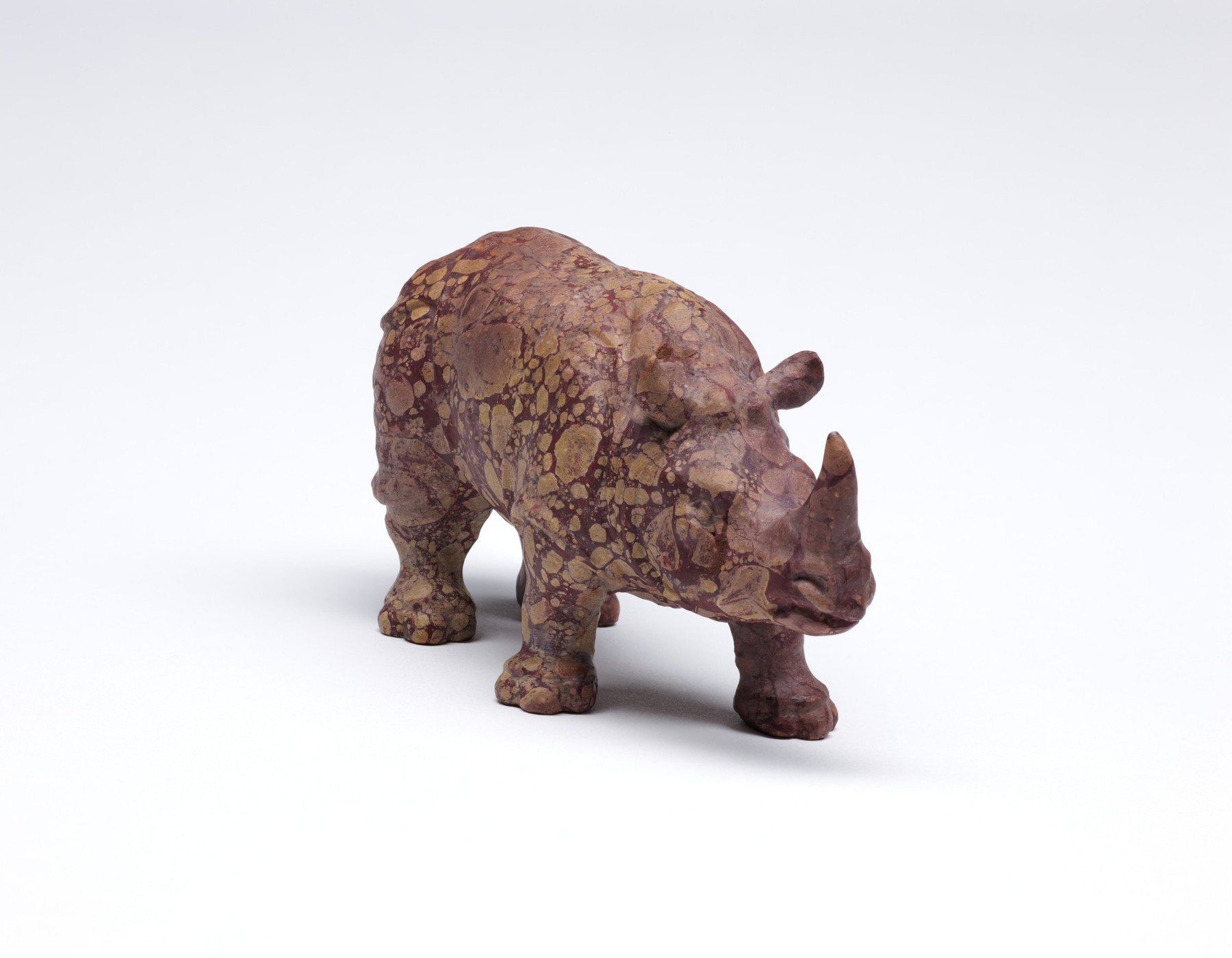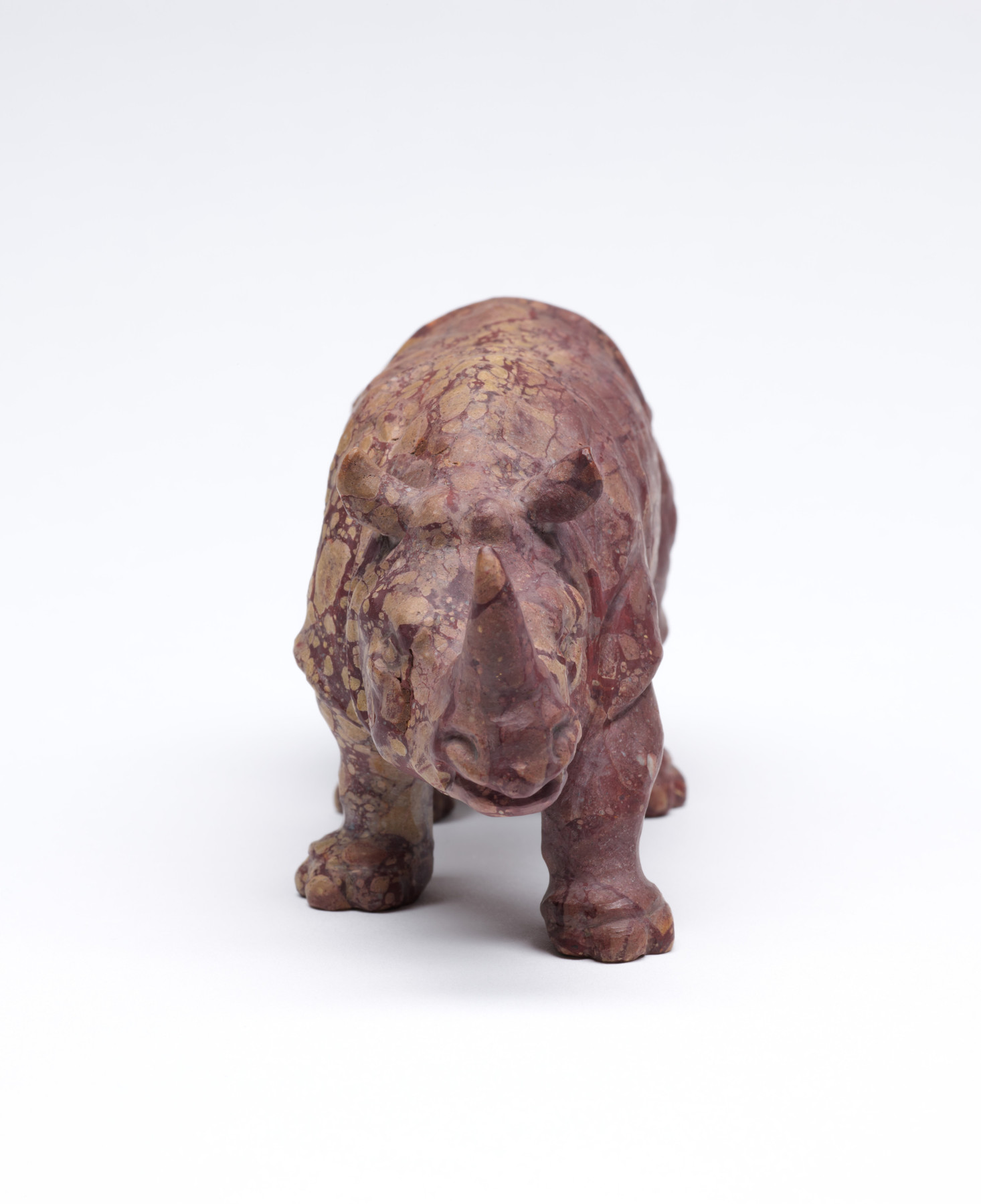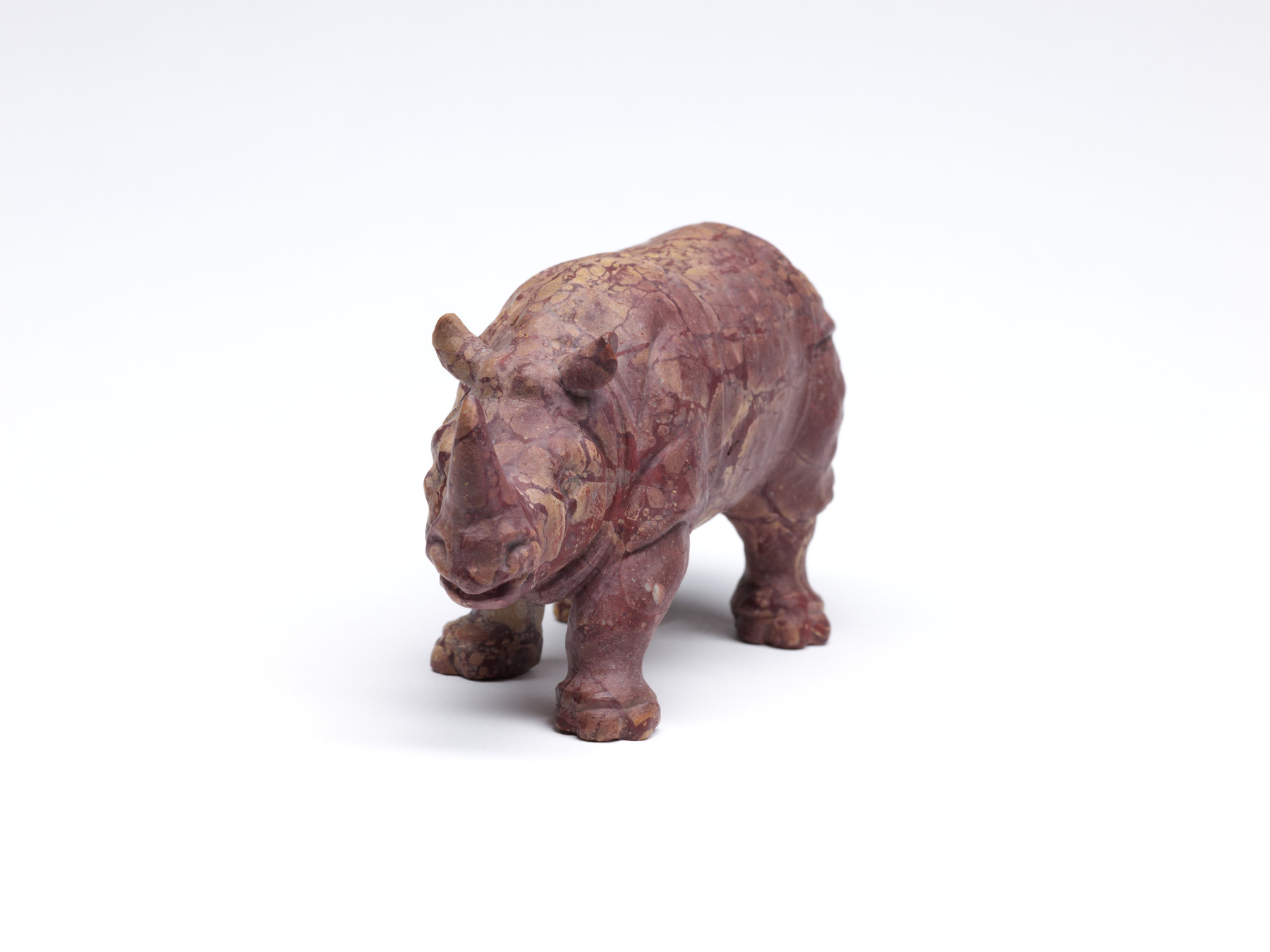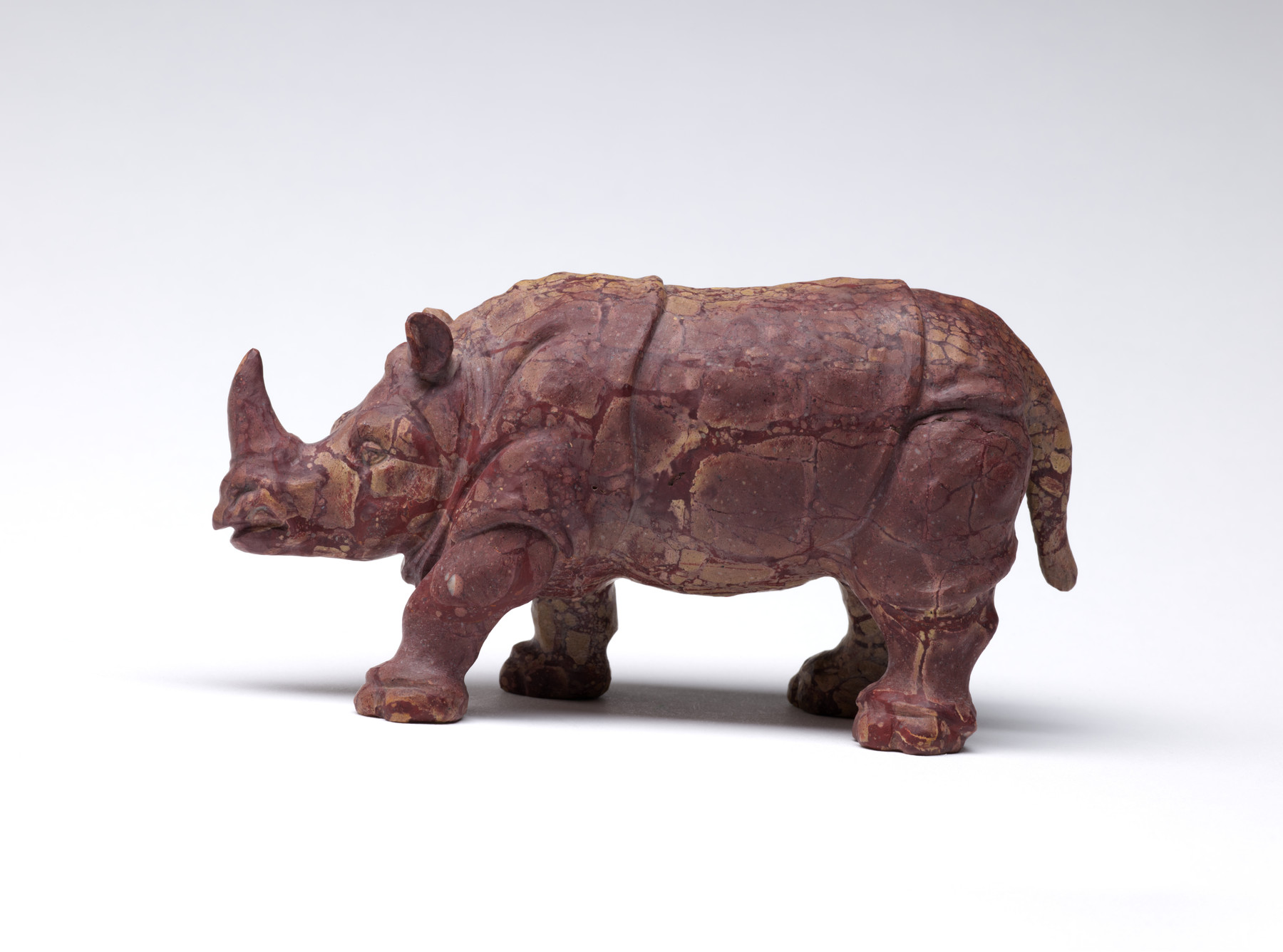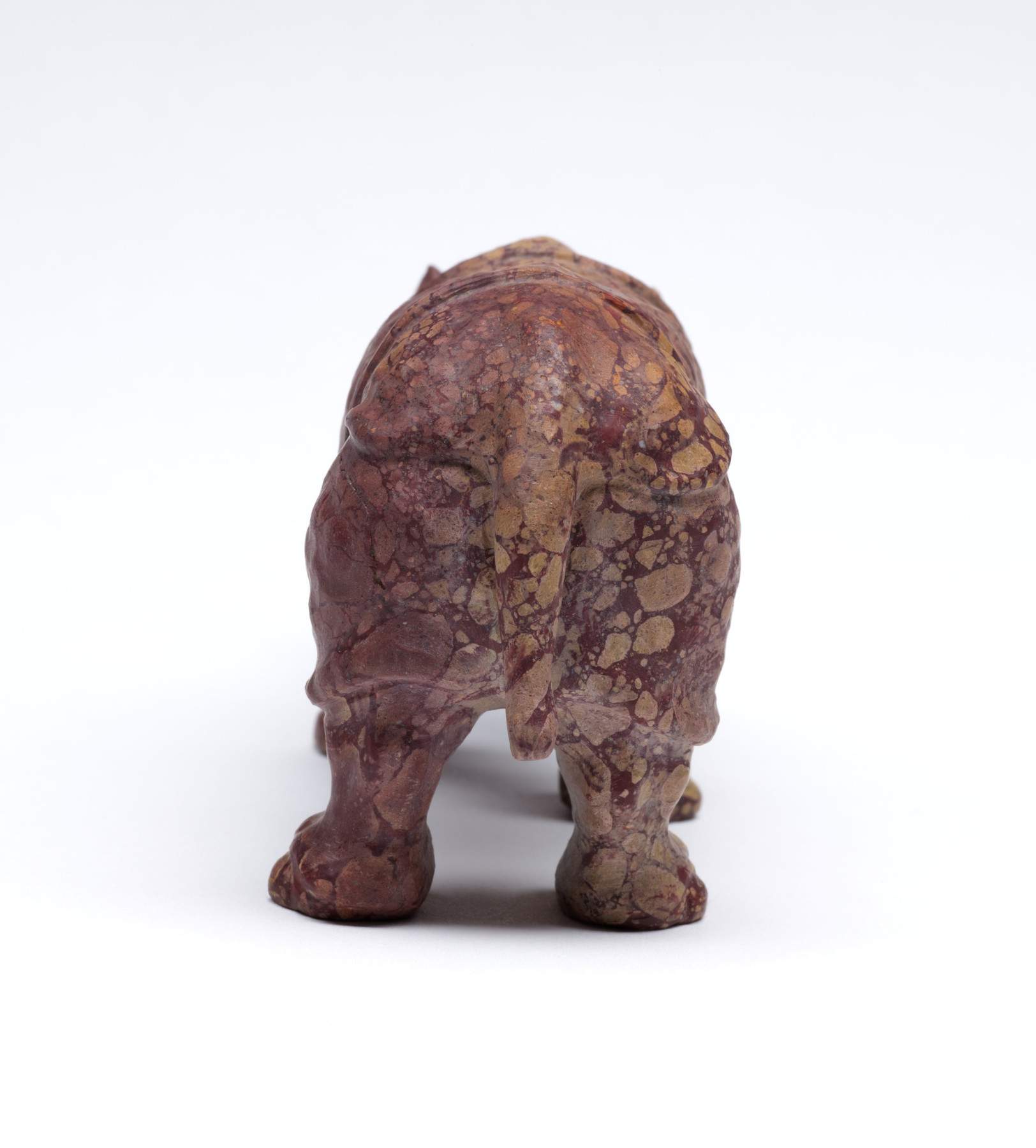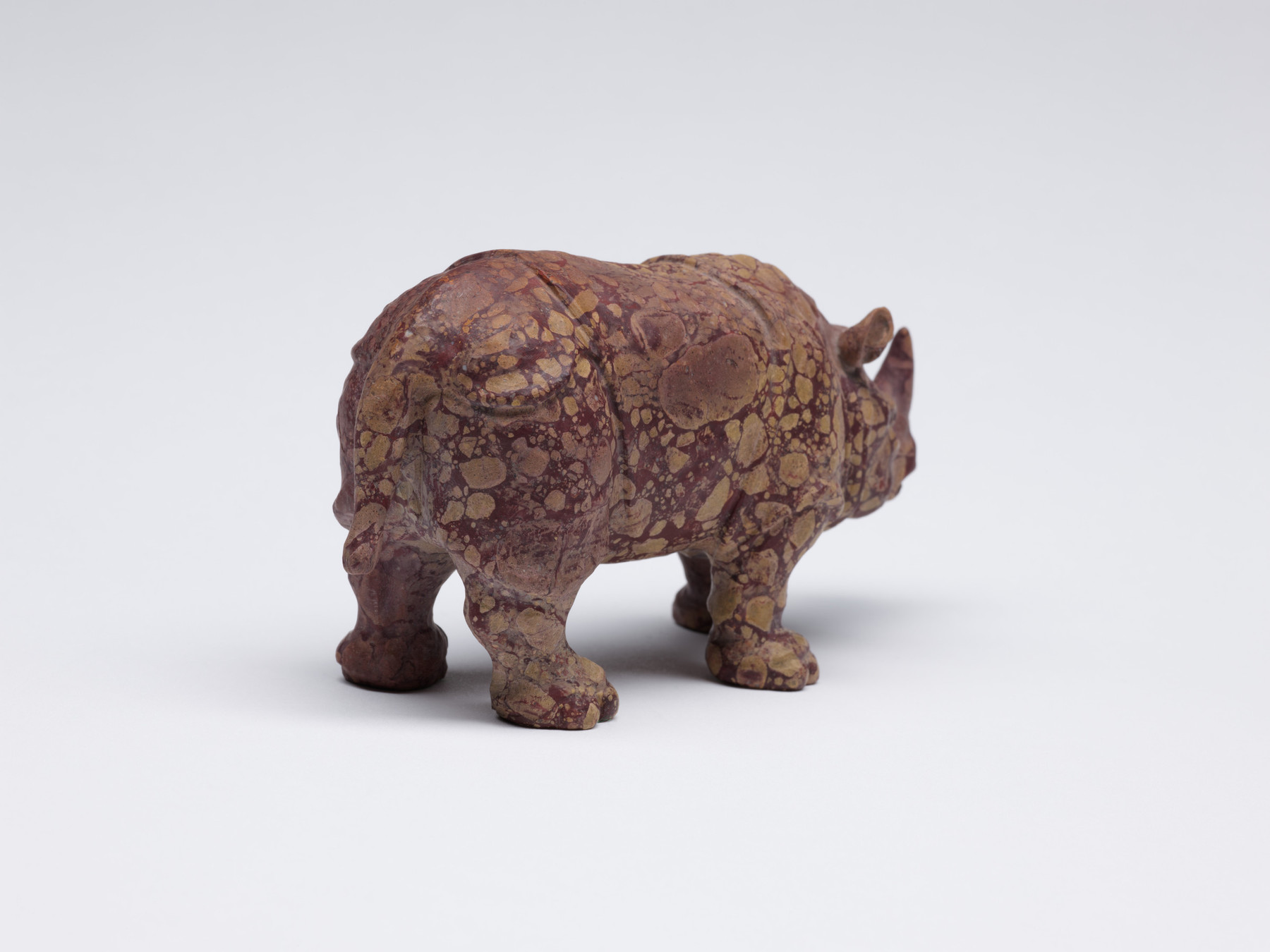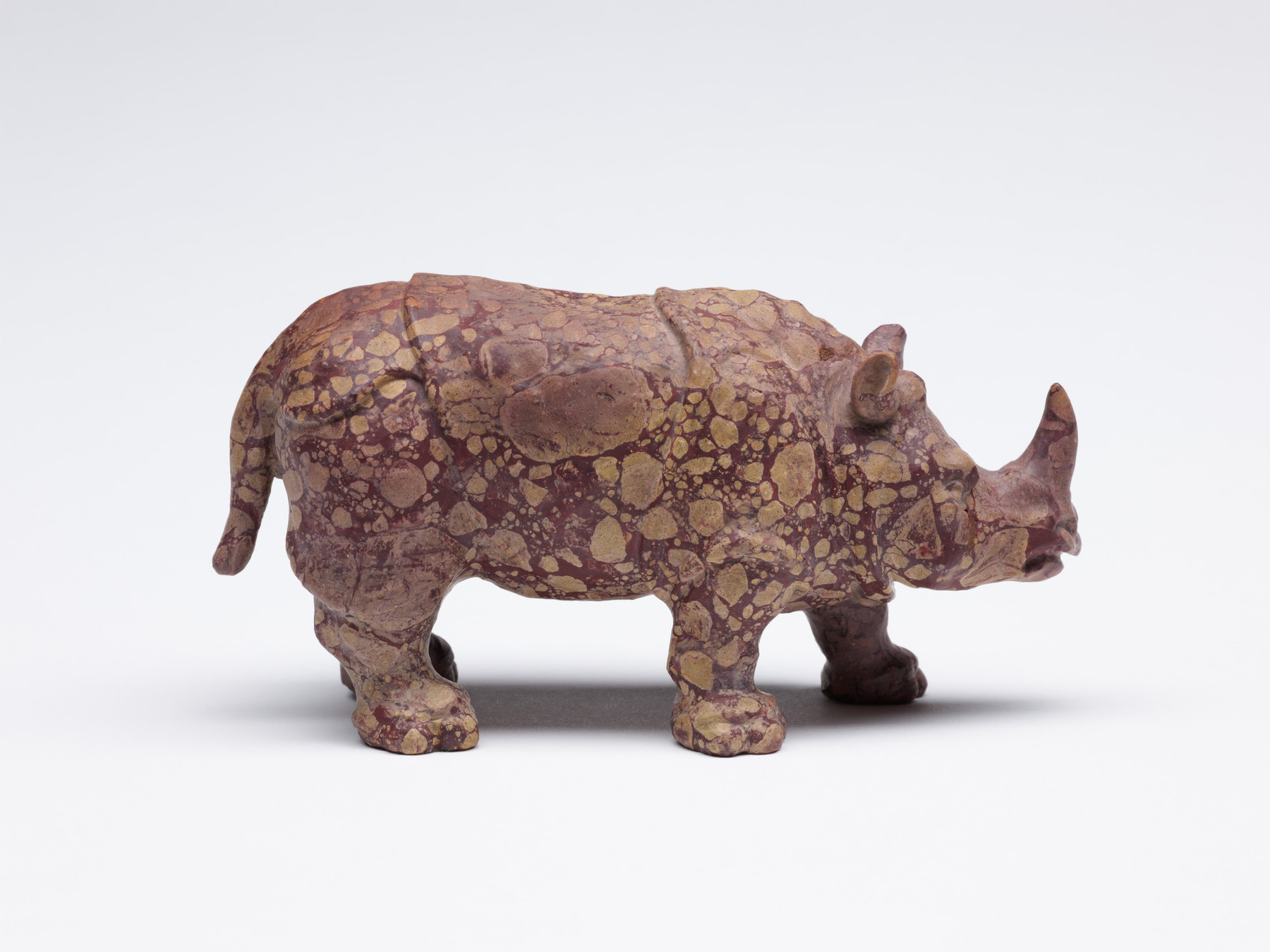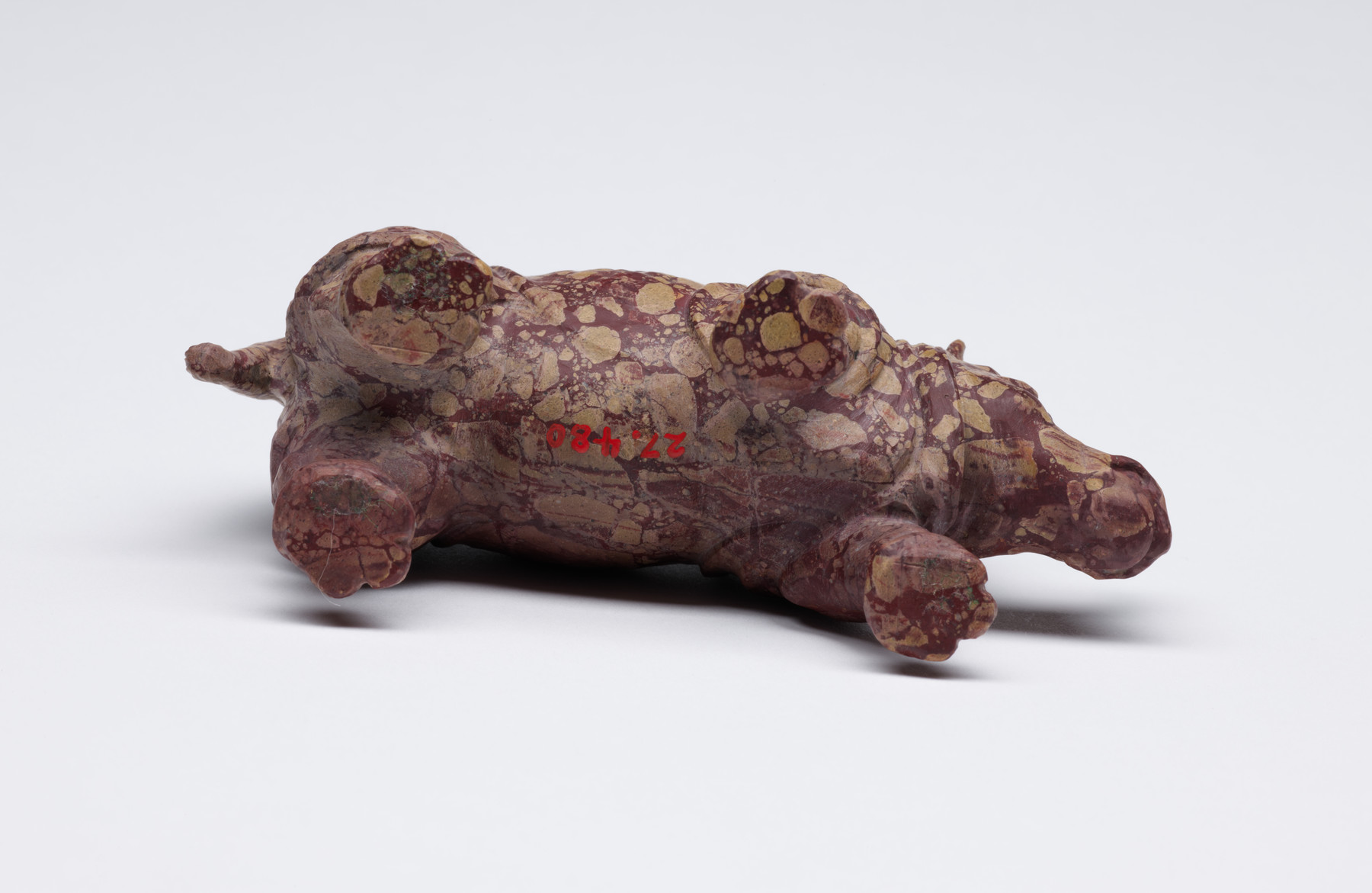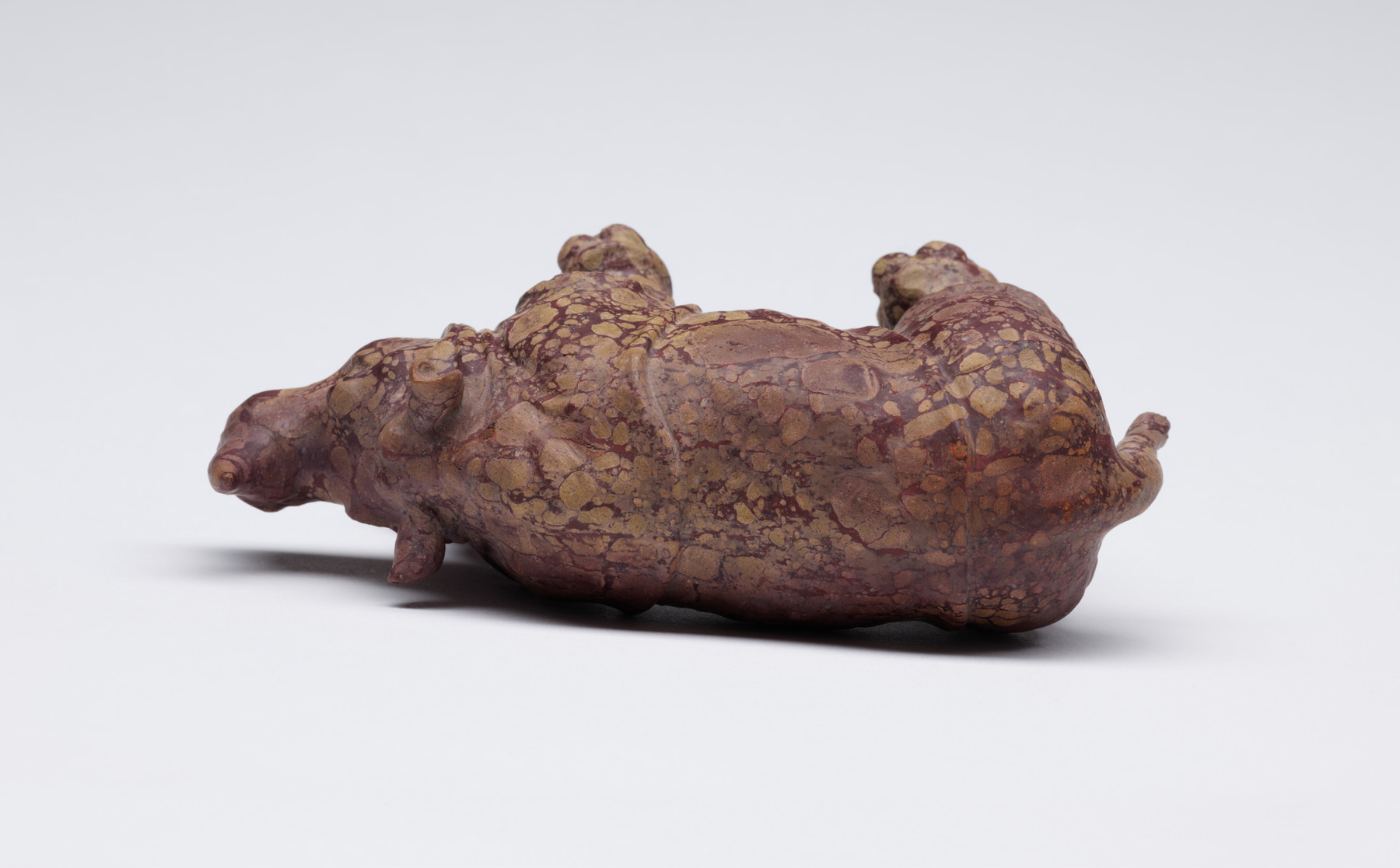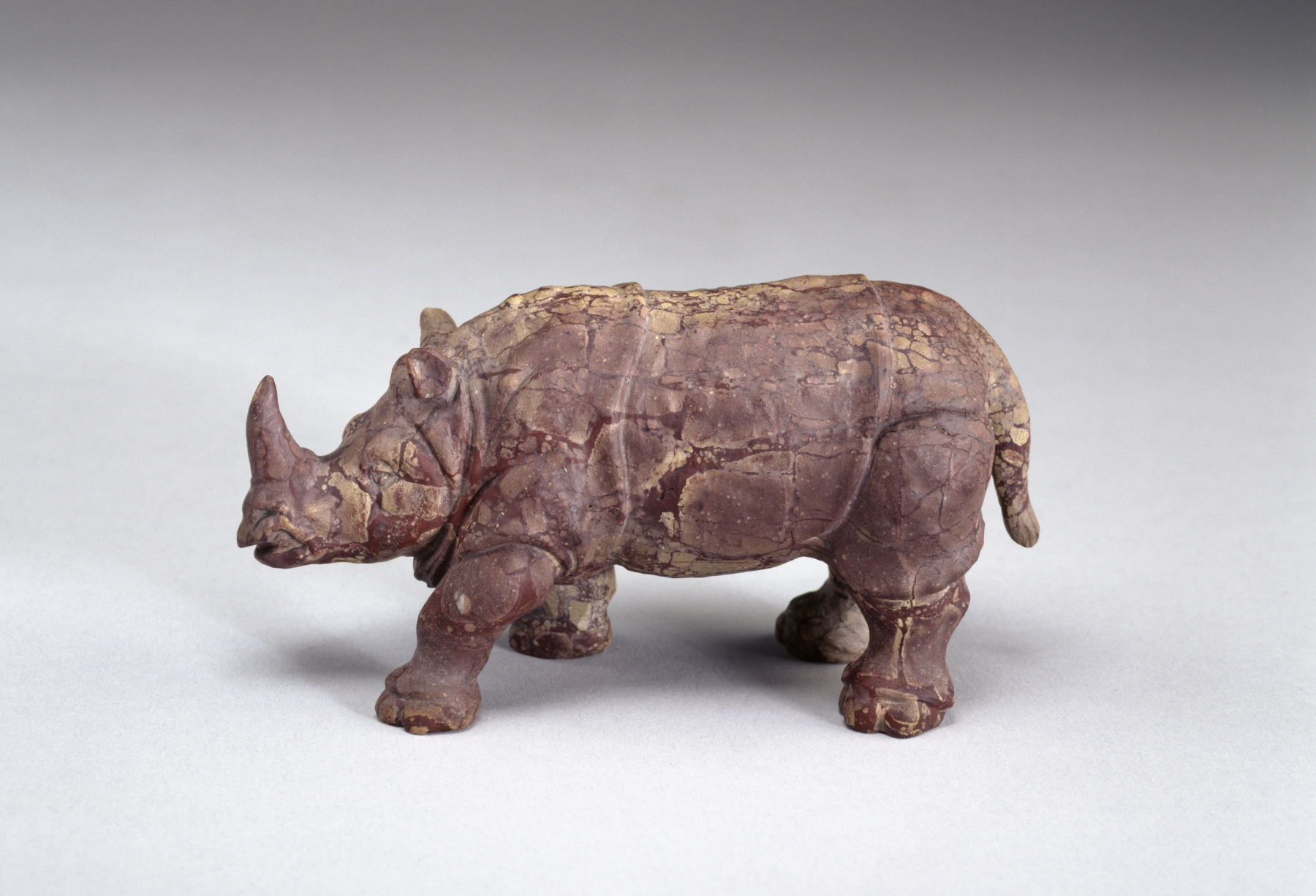Rhinoceros
(18th and 19th Centuries )
Represented is the Indian rhinoceros, an animal found east of the Caspian Sea. Fabergé did not establish a hardstone studio until 1908, so this piece must have been produced outside the firm, perhaps in Karl Woerffel's lapidary (gem and precious stone) works in St. Petersburg or at the Haus Stern factory in Idar-Oberstein, Germany.
Provenance
Provenance (from the French provenir, 'to come from/forth') is the chronology of the ownership, custody, or location of a historical object.
Henry Walters, Baltimore, 1900, by purchase [from the factory]; Walters Art Museum, 1931, by bequest.
Exhibitions
| 2017-2018 | Fabergé and the Russian Crafts Tradition: An Empire's Legacy . The Walters Art Museum, Baltimore. |
| 2014-2016 | From Rye to Raphael: The Walters Story. The Walters Art Museum, Baltimore. |
| 2003-2004 | The Fabergé Menagerie. The Walters Art Museum, Baltimore; Columbus Museum of Art, Columbus; Portland Art Museum, Portland. |
| 1996-1997 | Fabergé in America. The Metropolitan Museum of Art, New York; Fine Arts Museums of San Francisco, San Francisco; Virginia Museum of Fine Arts, Richmond; New Orleans Museum of Art, New Orleans; The Cleveland Museum of Art, Cleveland. |
| 1984 | Objects of Vertu: Precious Works of the Eighteenth Century. The Walters Art Gallery, Baltimore. |
| 1993-1994 | Fabergé. The State Hermitage Museum, St. Petersburg; Musee des Arts Decoratifs, Paris; Victoria and Albert Museum, London. |
Conservation
| Date | Description | Narrative |
|---|---|---|
| Treatment | Cleaned. | |
| Examination | Cleaned. | |
| Treatment | Cleaned in preparation for exhibition. | |
| Examination | Cleaned in preparation for exhibition. |
Geographies
Russia, St. Petersburg (Place of Origin)
Measurements
H: 2 3/8 × W: 4 5/8 × D: 1 5/8 in. (6.1 × 11.8 × 4.2 cm)
Credit Line
Acquired by Henry Walters, 1900
Location in Museum
Not on view
Accession Number
In libraries, galleries, museums, and archives, an accession number is a unique identifier assigned to each object in the collection.
In libraries, galleries, museums, and archives, an accession number is a unique identifier assigned to each object in the collection.
27.480

